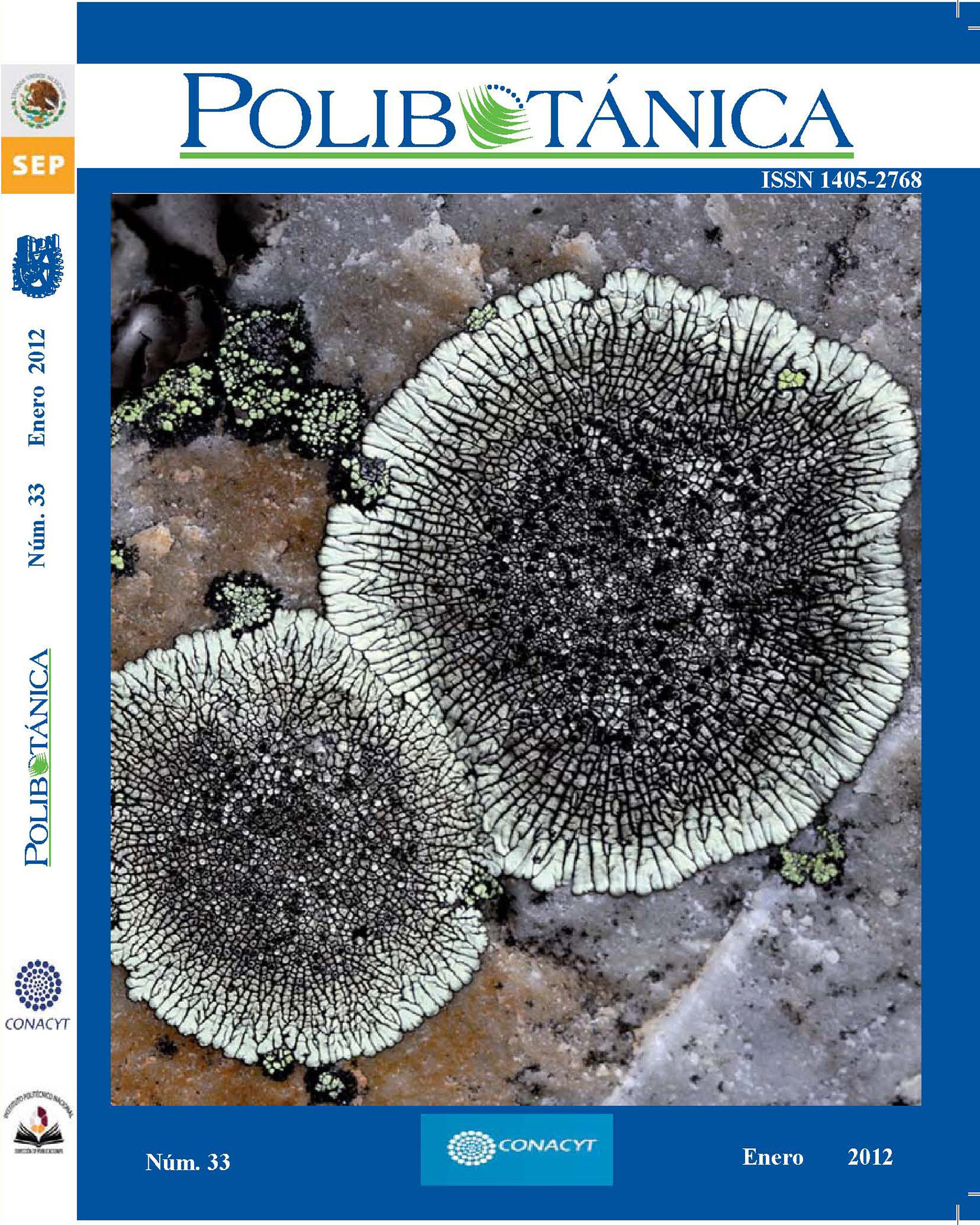SEGUIMIENTO DEL CICLO DE VIDA DE WOODSIA MOLLIS (KAULF.) J. SM. (ATHYRIACEAE-PTERIDOPHYTA) EN TRES SUSTRATOS NATURALES
Abstract
The Woodsia mollis life cycle (Kaulf.) J. Sm.
is described. The specimens were collected
at a montane rain forest from Coajomulco,
Huitzilac municipality, Morelos state,
México. Their spores were sown in small
glass containers with three natural substrates
(plant litter, maquique and moss). The cycle
was typically isosporic with Drynaria type
prothallial development. The gametophytes
were cordate and circular-cordate; the
antheridia were obtained in maquique
substrate since 99 days, and starting from
130 days in moss media, but in plant litter
they were not developed. Archegonia were
obtained in moss substrate since 81 days,
153 days in maquique and 185 days in plant
litter. Young sporophytes were obtained
exclusively in moss substrate since 296
days. It appears that this species needs a
specific substrate and in this experiment
the moss media was the best. Previous
papers cited the importance of calcium for
the development of some Woodsia species
and it is known that mosses generally retain
calcium carbonate.
Downloads
Published
Issue
Section
License

Polibotánica by Departamento de Botánica de la Escuela Nacional de Ciencias Biológicas del Instituto Politécnico Nacional se distribuye bajo una Licencia Creative Commons Atribución-NoComercial-CompartirIgual 4.0 Internacional.




















